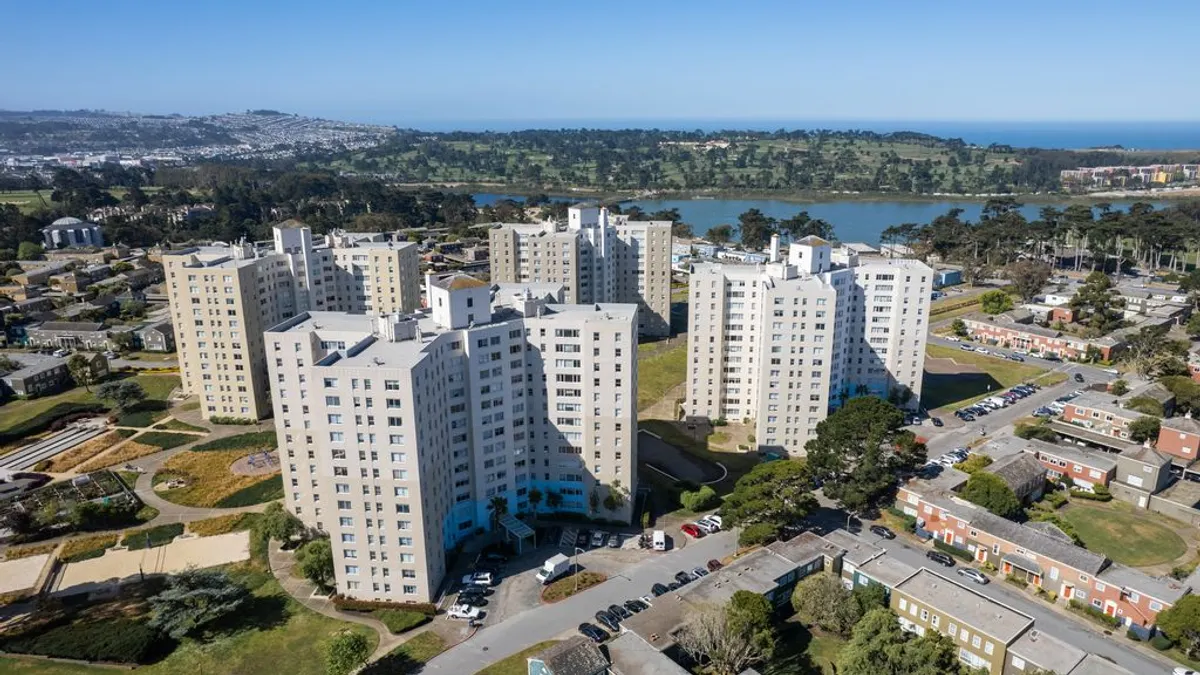With at-home chargers expected to make up more than 80% of electric vehicle charging installations by 2040 and demand for EV charging soaring at multifamily properties, apartment owners and managers are scrambling to provide the infrastructure residents need.
Owners and operators who have installed charging systems offer the following advice to multifamily properties that are preparing to join the EV revolution.
1. Ask residents what they need
Survey residents and potential residents to help determine how many chargers your property needs, whether they prefer less-expensive shared chargers or would pay to have dedicated chargers, and whether they would be willing to share charging stations with the general public.
Operators also need to determine whether existing rental agreements, covenants and restrictions should be updated to address EV charging.
2. Research laws and regulations as well as incentives
Keeping up to date on EV regulations is a big job. “Local and city requirements change all the time,” said Diana Pittro, executive vice president at Chicago-based RMK Management Corp., which is installing charging stations at most of its properties in Illinois, Indiana, Wisconsin and Minnesota.
In addition, local, state and federal programs (and sometimes private companies) may offer incentives and rebate programs that can help offset the cost of acquiring and installing charging stations. EV stations also earn properties points toward LEED certification.
3. Determine whether to offer EV charging as a free amenity or a paid service
Providing free EV charging will make a property more attractive to residents and prospects. Charging can also be offered as a service, for which residents pay anywhere from 15 cents to 25 cents per kilowatt hour (about the equivalent of $2 per gallon in a gas-powered car) to $170 per month for dedicated EV parking spots.

“You can set this up as an amenity you’re giving to residents, or you can charge for the service by taking the view that when someone goes to the gas station, you’re not paying for them to fill up their tank with gasoline,” said Jill Brosig, managing director and chief impact officer for investment management firm Harrison Street, which installed nearly 300 Xeal charging stations at senior and student housing properties in California, Massachusetts, Texas and Virginia last year.
“With the latter, it is a convenience to EV owners and could even be compared to one paying a premium for a better parking spot,” said said. “There are several ways to approach it.”
4. Choose which type of chargers to install
Level 1 units, the most affordable at $300 to $1,500 per station, charge about 5 miles of range per hour. Level 2, the most common in apartment buildings, can cost up to $7,500 and are able to charge multiple vehicles faster — about 16 to 25 miles of range per hour — and can also network and balance electrical loads.
5. Choose a vendor
At least 100 companies in North America are vying to provide EV charging infrastructure or provide charging as a service, and many of them tailor their products specifically to multifamily properties. The vendors offer several different options, from selling or leasing the equipment to installing and operating EV chargers and sharing profits with a property.
Before committing to any vendor, it pays to do your homework, said Wendy Deetjen, senior regional manager for Chicago-based based real estate management firm The Habitat Co., which has been installing EV chargers at its multifamily properties for 10 years.
“There are a lot of players out in the marketplace,” Deetjen said. “There’s a range of products, and the costs have big swings. You want to be thoughtful so you don’t lock yourself into something you might not want down the road. Make sure the payback makes sense and have a long-term plan versus just accommodating your needs today so you’re not spending good money after bad.”
6. Decide how many spots you need
For new builds, a general rule of thumb is to equip at least 20% of parking spots with chargers and include enough conduit to add more as needed. Certain jurisdictions, such as Denver; Oakland, California; and Vancouver, British Columbia, now require all parking spots in new buildings be EV-ready.

“Futureproofing is the best strategy for getting the most out of the investment in EV charging,” said Ted Weldon, executive general manager of development for the Chicago office of global real estate developer Lendlease, which has installed EV chargers at every property it has developed. “If you base your targeted charging capacity on today’s needs alone, you are likely to face greater expense and difficulty later when you need to expand.”
According to CalMatters, installing EV infrastructure during construction is far less expensive than retrofitting, which can be four to 10 times more expensive. The costs of installing high-voltage circuitry for EV charging equipment at multifamily properties jumps from $1,410 during construction to $4,101 after construction.
7. Upgrade electrical capacity
Most garages at existing properties have limited electrical capacity in parking areas, usually just enough for lighting and elevators, so operators need to consult an electrician about whether electrical panels are adequate and seek guidance from local electrical utilities on infrastructure needs, electricity costs and demand charges. The electrical service room might be far away from charging locations, especially in garden apartments, making it even more expensive. Installing EV stations at existing properties can entail trenching and/or cement excavation.
Electrical and building permits are usually required, and utilities can take up to a year or more to approve installation plans. Factor in time for applications, inspections and permitting.
8. Get the most bang for the buck
Once the chargers are in place, operators must develop policies and procedures to manage charging and make plans to promote the service to residents and potential residents. Owners and operators should publicize the fact that they offer EV charging in order to get the best return on their investment.
Despite all the decisions that go into setting up an EV charging program, one thing is clear: Renters will flock to properties that have them.
“Very soon, it’s going to move from being an amenity to table stakes,” said Brosig.
















